Stretch Your Dollar by Preparing Frozen Food
So here’s the really shitty news: with the amount of jobs being lost there are millions of families who now need to figure out how to stretch their dollars when they’ve never done so before. Most financial bloggers out there have slowed down their update frequency in response to this; your conventional financial advice rings hollow in this new reality. I’d like to tackle some necessary spending today on how you can really save at the grocery store, specifically when it comes to frozen food.
There’s always the go-to advice you could try: use coupons, buy in bulk, don’t shop hungry, yadda yadda. Pre-pandemic I added my own tips for your grocery repertoire: know who sells the cheapest stuff in your area, know where the discount sections are, and eat frozen.
Which is easy for me to say when I’m used to eating frozen food. If you’re not used to it – or worse, you don’t know how to prepare it – this can seem a non-starter, similar to folks who will just keep ordering takeout instead of trying to learn how to cook at all. Let’s look at how to best prepare frozen food to eat so you can save that much money.
The Numbers Support Frozen Food
When you look at the objective opinions like math, it’s clear frozen wins. I’ll use frozen peas as my example, because I eat peas more than any other vegetable. One serving of peas is roughly 5.3 ounces, aka a third of a pound. This is also roughly a cup, or about 150 grams. I’m including all of these measurements because I’ve seen all of these measurements on the packaging and I’m trying to cover my bases. If you buy a bad of frozen peas for $1.50 (which is more than what my local Shaw’s and Stop & Shop sell em for) you’re looking at fifty cents a serving of vegetables.
Fifty.
Cents.
That’s MUCH better than much of the prices you’ll find in the fresh produce section; they’re also likely to be more nutritious that their pricey counterparts, since they’re frozen at the peak of freshness.
Plus, veggies fill you up like nothing else, which is awesome for having a healthy relationship with food. That also means you don’t need as much food to feel satisfied after a meal, as demonstrated/simplified by this Pinterest graphic:
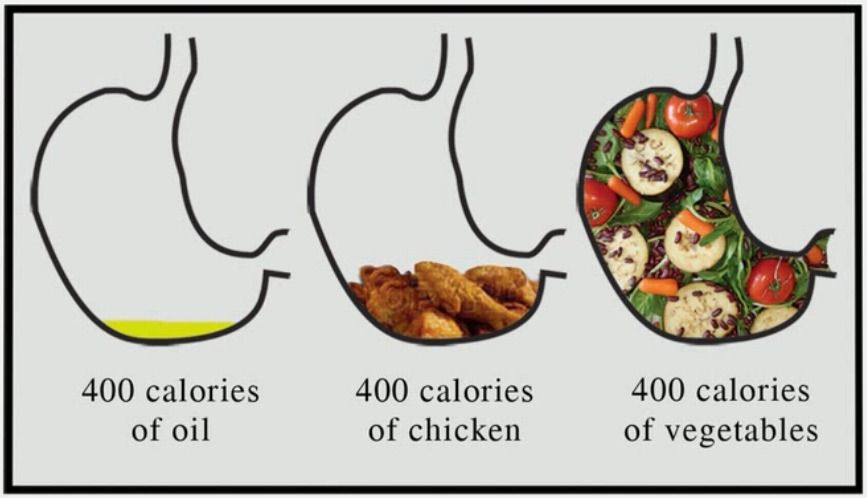
It’s as astonishing phenomenon similar to that of environmental frugality, where, by saving money, you also help the planet. By buying frozen food, you keep a lean grocery budget while upping the quality of the food you’re eating. You deserve having that win!
How to Prepare Frozen Food
And the best part of it is this: frozen food isn’t actually that hard to prepare. I can say that with confidence because I get too impatient for anything other than what’s super simple. If you’re using vegetables (like peas) here’s Darcy’s Step-by-Step Guide for Making Tasty Frozen Peas:
1. Bust out some cooking oil and a pan.

Pour in just enough oil to cover the bottom of that pan.
2. Take out your frozen bag o’ peas from the freezer, dump the frozen peas into your pan, and set the heat to medium.

Common sense dictates your amount of peas shouldn’t exceed the amount the pan can handle; generally 4-6 ounces are good for your standard pan. There’s no need to thaw like you would for some meats or other foods; you just take the bag from the freezer and pour em in.
3. Let the peas sit for a few minutes, then mix/toss so all the peas have some oil coating.

If you like oniony tastes, add minced onion and wait to toss until those pieces are light brown. I like adding garlic and onion powder here to make it out-of-this-world delicious.
4. Let it cook for 5-10 minutes, then mix again.
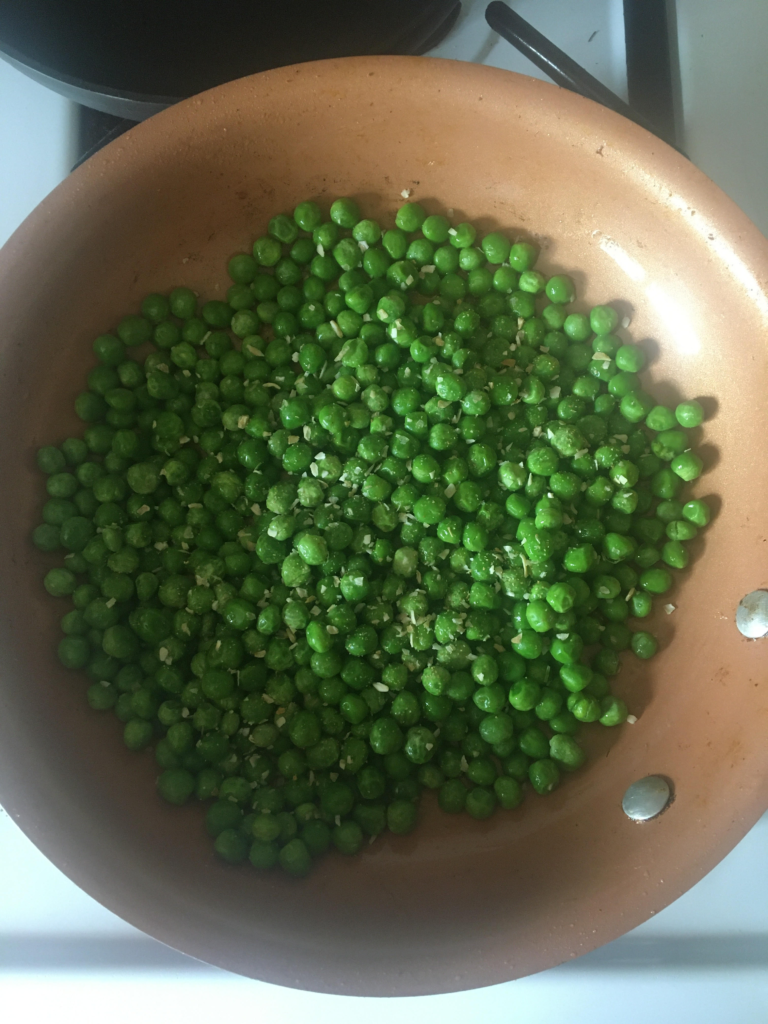
You should see some of the peas are a bit blackened, which is what you want. Add some garlic powder here, or garlic salt if you’re cool with the sodium.
5. At this point I’ll toss every 3-5 minutes, depending on if something else distracts me.
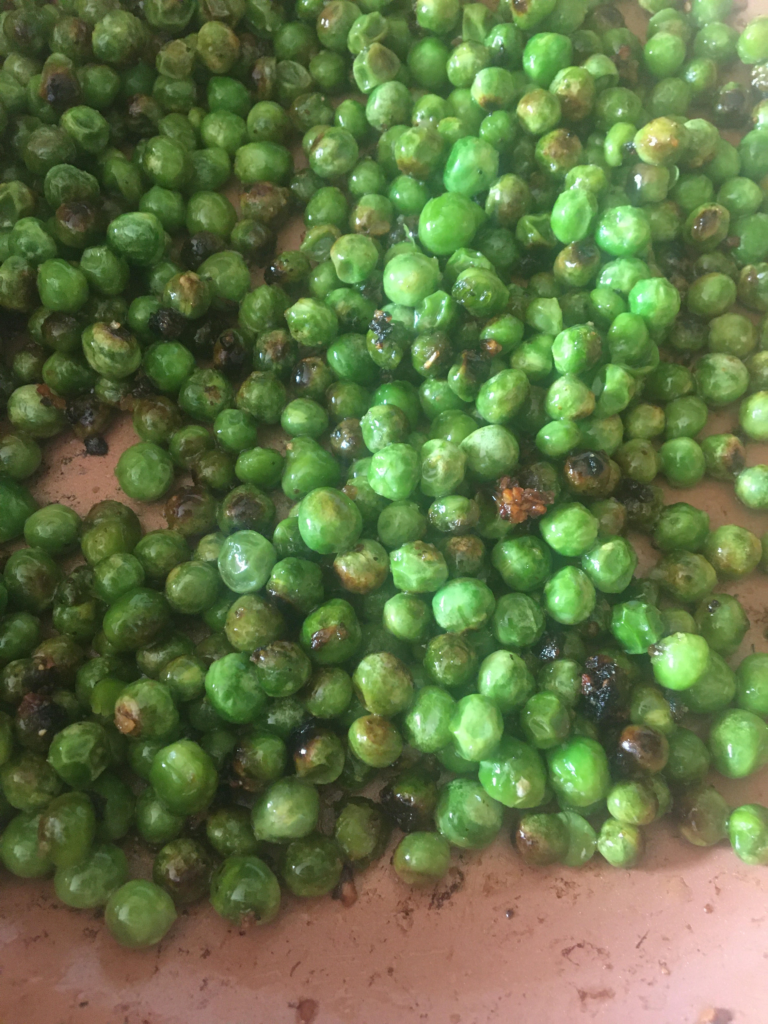
It should be smelling IRRESISTIBLE here, and it’s fine to stop cooking at this point.
6. Plop those babies into a bowl.
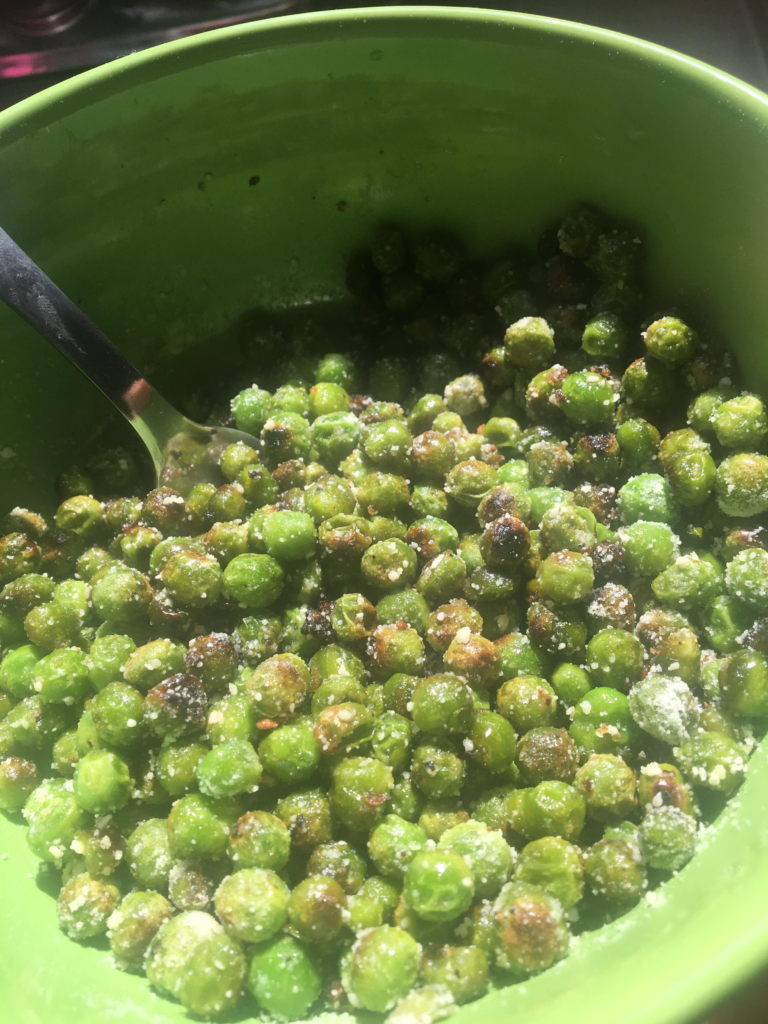
They should be oily enough from the pan, but you can add a little more olive oil if you want. Also add more spice here. I threw in some Parmesan to make my taste buds swoon. *chef’s kiss*
I normally do the above most nights for dinner, switching up some prep work/cook times depending on the vegetable. I like adding fried eggs on top spiced with chipotle and roasted garlic seasoning to make a complete meal.
AND YOU NOW HAVE DELICIOUS VEGETABLES YOUR TUMMY WILL LOVE. The recipe instructions above also work well for broccoli, cauliflower, stir-fry veggies, and Brussels sprouts (assuming they’re cut in half beforehand). Snag whatever vegetables at the store you like the taste of and use this as a baseline to expand your cooking ability. Impress yourself with the new skills you’ll literally cook up.
Further Tips
My go-to-spices besides onion and garlic are Cajun, curry, and red pepper flakes. Other people like using lemon juice, thyme, or ginger. Try out a couple of spices, and if you don’t like one spice try using it on another dish. My absolute favorite spice in my spice cabinet is one I’ll use ONLY for meat or eggs, NOT veggies.
Thanks to humans having cooked for millions of years, we’ve discovered a few ways to make our dishes phenomenal. Even the dishes you were raised to believe were nasty by nature. Give vegetables a try for both your health and your wealth.
If you want to get a second opinion, your local grandma is another excellent culinary advisor. They’ve been generally cooking at home for decades and can give you some awesome tips of the trade.
Give Yourself Options
With all that being said, there’ll be some days that you won’t want to cook at all. Prep yourself for those days by buying some healthy frozen meals to zap instead of cook. My most-loved recommendations are both from Trader Joe’s and three dollars each: their riced cauliflower bowl (with mouthwatering tahini sauce) and palak paneer (basically a spinach and cheese dish that I’ve publicly drooled over on Twitter). Eating one a day comes out to a measly $21 a week of getting yourself some excellent nutrition via one tasty dish. And all this takes is a few minutes in the microwave.
What are your go-to frugal meals that are also filling and tasty? How much time does it take to cook up your meals?

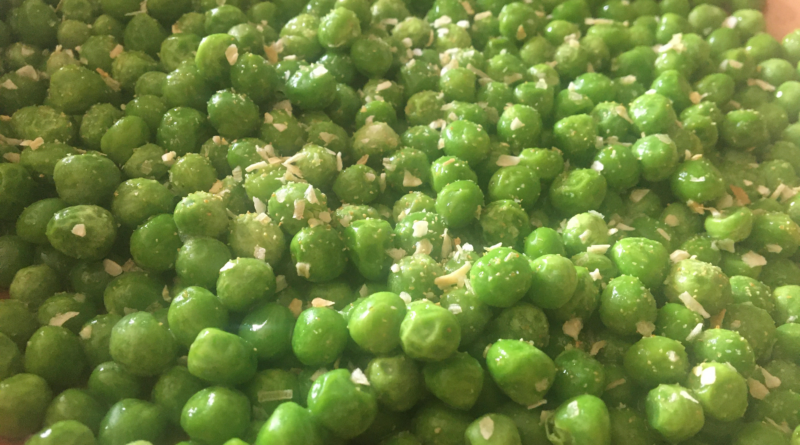
I can’t agree more that frozen food is an amazing tool! When I lived in Spain I got my food shop down to around 6 euros each week – buying frozen veg was the only way I would’ve got it so low, and the food was all really healthy and packed with vegetables! Love this post – I’ve not cooked peas like that before but as they’re one of my favourite foods I’ll give it a shot.
Also, I’ll probably sound nuts for suggesting this, but I also eat them frozen from a little dish. It’s satisfying and has a huge snackability feeling which always makes them hit the perfect spot when I’m in the mood to nibble.
Funny, I also lived in Spain for some time! This was in college and I had a host mom who cooked AMAZING meals; this was years ago and I still drool when thinking about her empanadas.
Also funny that you mentioned eating them frozen, because when I was little my parents would give me frozen corn to eat if I got too hungry before dinner. Which, for a kid in the Midwest, is a VERY on-brand snack.
Being cooked for by a Spanish mum is the BEST.
You should seriously try out frozen peas, I have them with TV now instead of popcorn!